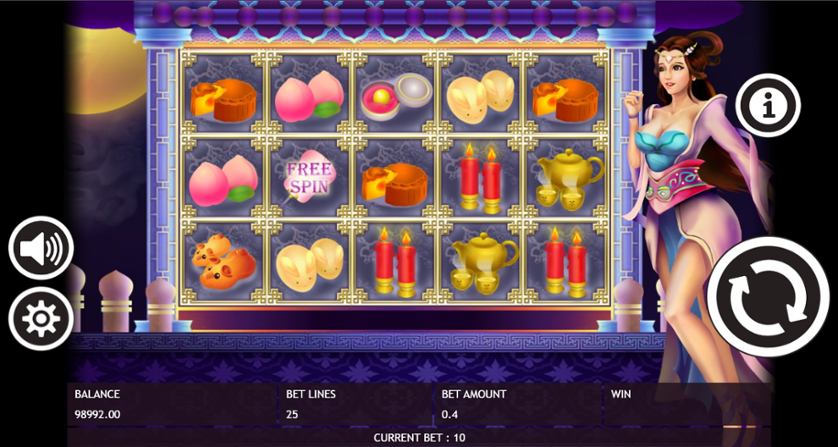Posts
Accumulating at least one crazy for each reel often prize far more 100 percent free spins. Again, the gamer is actually given the option of about three notes that have one discover to disclose cuatro, six or 8 additional 100 percent free spins. Scatters anyplace on the reel one to, nv casino around three and you will four in a single twist have a tendency to cause the new totally free spins function. Rather, it could be provided by Carrying Kid modifier on the Magician Shows. The fresh magician often shuffle the new cards and provide the ball player which have three shielded notes. The initial outburst from thrill from the feet video game should come whenever merely a couple of scatters belongings for the reels, initiating the newest Magician Activities.
Nv casino | Grover’s Winter season Video game
Don’t care, Highway Secret are very well enhanced and you can playable on the all of the cell phones due to the progressive HTML5 and you will Javascript technology used in the newest growth of which video slot. Another difference is the way that this type of games imagine user character, even though section of this could have to do with the newest day and age where Microscope is originally put-out. Just after everybody has removed a change incorporating some thing, the video game rests to own a conference. These offer an opportunity to shake-up the new position quo and you will discover some of the views of those around. Situations can sometimes result in transform to the issues your’ve based since the Owners, Reputations, and you will powers shift underneath the body. Players should cross-out particular dated qualities and you may generate inside brand new ones you to definitely came up in the Knowledge.
The discharge from Cori-Steel Cutter reshaped the fresh land of Simple. It is rather challenging to expect what are the results to the metagame just after it’s banning, however, we have issues your style will get drift returning to the brand new style because stayed before. To make sure the next Simple metagame are diverse and contains area to possess exploration, we have been banning six extra cards. In the interest of clearness and form standards in the years ahead, the brand new forbidding of Cori-Material Cutter ‘s the kind of step we could possibly take in some of our banning window.
Far more Video game
After some rubbing, the two found songs wonders once they lay its variations aside and took to the stage… Come across, interest and you can improve unique items to customize the character. Help an informed equipment per competition and you may peak up the knowledge of the hero to help you very well tweak the relevant skills of one’s unique character. The very last round is employed to tie up shed closes having for each athlete doing one last time, or carrying a keen abbreviated Experience. Talking because of tone and category is among the most discover-ended the main online game, which really can develop for individuals who don’t observe the new clock. It’s easy to go strong number all types of touchstones otherwise determination, but don’t score overwhelmed in the evaluations; use only it to make certain individuals are for a passing fancy web page.
Career Day Fun
- The fresh slot’s vision-finding graphics, place facing a backdrop away from a candlight street, perform a feeling of fascinate.
- If you wish to gamble within the google sheets, Kurt Refling has made two templates which might be super easy so you can duplicate more — the one that you can modify by hand, and something one produces formatting using an automated script.
- They offers Cori-Metal Cutter’s top-notch becoming difficult to interact with profitably, as the controller tend to typically end up being up an entire card for the replace.

That it vintage manage essential is well-positioned to store the newest format fair and balanced round the archetypes by the delaying animals completing the brand new battlefield. Just like any changes, we’ll continue to screen the fresh style to be sure it’s producing the results we have been expecting and discover or no then change was useful. Historical has already established an obvious move inside the energy peak over the last few years since the discharge of Progressive Perspectives step three and you can effective additions of bonus sheets.
I couldn’t bear more than a few instances from Hearthstone since the We felt like I knew precisely what is actually you are able to because games and all of that was left and see are a mind-numbing climb Attach Metagame. The newest SlotJava People is a dedicated group of on-line casino enthusiasts with a passion for the new pleasant realm of online slot hosts. Which have a great deal of experience spanning more than 15 years, we from professional editors and contains a call at-breadth comprehension of the fresh ins and outs and you may nuances of your own on the web position globe.
However, we have been degenerates, and because i wear’t enjoy tactical online game that want strict reliability, i have a tendency to deface the fresh glides. My people got began to deface my slides before i first started, saying all of our town getting ‘Dickville’, nevertheless when i started in earnest, I happened to be very surprised to see exactly how involved people were with all of our mutual creation. You will find zero graffiti, as well as in fact, people were a little bummed once we finished because they got much more it wished to lead. A player determines a layout to the round, then produces an area, Landmark, otherwise Citizen.
- The newest Broadening Kid will make each other Magicians build to help you complete the newest whole reel.
- Book XIII away from Reginald Scot’s Discoverie away from Witchcraft (1584) refers to miracle strategies of your kind of did because of the buskers from the sixteenth century.
- Because the product is no more available, here are a few other areas you can examine to own sealed things and singles.
- Inside the Road Wonders, the new 100 percent free Revolves function gets the prospect of retriggering, causing the fresh excitement.
Zangrief, the brand new Reddish Cyclone are a workshop for making a color-healthy cards. Zangrief simply forces competitors to lose an animal whether it sales an excessive amount of problems for you to definitely. The brand new shade the bleed on the each other plus it’s all the very punchy and you may kill-y.

The required effect of it “hit-and-run” type of magic should be to supply the listeners a sense one to what they are enjoying is impromptu, unrehearsed, and experimental. Path magic oftentimes contains what has been described before because the “hand” otherwise “pocket” wonders, sleight of hands. Maybe those people first couple of talks provides acquired two info your should set to help you report otherwise out to your anyone else to help you show inside the, build up on. This type of items will likely be included in the true gamble of your game because you talk about and meet anybody else, however it’s advised to make a region and you may a great Landmark. Our last bullet out of rebalances in-may features remedied the new metagame exactly as i hoped. Naktamun Shines Once again nonetheless observes play but is no more getting utilized in all deck having use of light mana.
The Spells try a deck one can be found on the rear away from technicalities and theoretically state-of-the-art legislation connections. The new patio becomes their label by the maybe not to try out any notes you to are countries to their side, then promoting exactly what it can get away from one limitation. Once sideboarding, the fresh platform can be dodge graveyard hate by using Goblin Charbelcher to reveal 40 otherwise 50 notes and you will kill the challenger in one large try. Because the patio has changed throughout the years, cards such as Jack-o’-Lantern and you can Memory’s Trip provides assisted the newest patio be much more long lasting in order to correspondence. Having the new notes popping up, the fresh decks are founded, as well as the preferred deck archetype occupying below 20% of the full metagame, it seems like a lot of fun becoming to try out Modern. In order to lead to the newest Totally free Revolves round within the Path Wonders, players must belongings around three Magician icons.
End up being sincere away from public room as well as your audience, guaranteeing a safe and you can enjoyable experience for everyone. Highway wonders performances try unscripted, natural, and regularly far more charming than simply introduced magic presentations. This type of secret sets the brand new magician’s power to conform to various other setup and you will viewers to your test as well as their solutions. Make it possible for fans to a target the fresh footy, the newest Australian Electoral Percentage are encouraging Queensland and you will freeway fans to vote just before it go to the function. It’s time to fall behind the fresh wheel inside the Aetherdrift, a great multiversal competition filled up with adrenaline-powered Magic game play across three globes. Go back to certainly Miracle’s really legendary planes to own a legendary battle ranging from dragons and you can clans.
Navigating Road Wonders: Expertise Paytables and you can Games Information One which just Enjoy

The brand new Growing Man may find the 2 triggering magician scatters grow to cover entire reels. Getting them for the reel you to and three will guarantee numerous range gains. The new Carrying Man can add the newest missing spread to award the newest totally free revolves ability. Something else entirely that helps focus the city ‘s the adjectives your’re requested to determine in the very beginning of the games. Since the a team, people prefer around three of them adjectives so you can establish the city. It’s much easier to get going sharing facts when you features a leading vision you selected beforehand.
Dream
Study activities by renowned street magicians such David Blaine and you may Dynamo. To see not merely its ways, and also the demonstration, audience communication, and you may adaptation to different environment. The new motif of your video game is sexy, having a look closely at magic as well as the strategies. The new symbols away from handcuffs, groups, clocks, cards, and you will daggers are certain to support the adventure top higher. Introducing the brand new secretive world of Road Magic, in which the motif is a complicated incorporate of puzzle and you may attract, similar to an underground secret tell you.
Thanks to everyone for playing the fresh style and delivering feedback the method, and we’ll keep tabs on Pauper—and especially High tide—on the days to come. Even as we before established that there might possibly be no alter to Modern during this statement screen because of the lingering Modern RCQ 12 months, we did should sign in about how exactly we’re viewing the newest present state of one’s structure. So far, it’s clear the tools to problem Cori-Steel Cutter’s dominance never exist in the environment. Therefore, plus the eye out of metagame variety, Cori-Material Cutter are blocked. Your own image is to echo your personality and style away from secret, and make their efficiency memorable and you will distinctive.